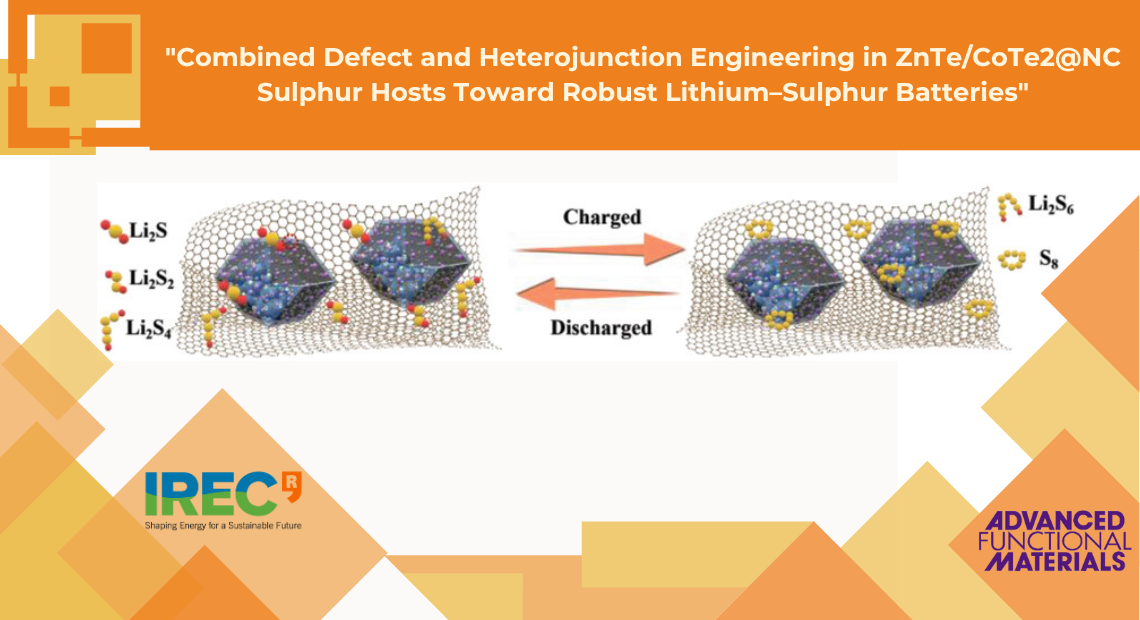The Functional Nanomaterials group at the Catalonia Institute for Energy Research (IREC) has made a significant contribution to the advancement of robust lithium-sulphur batteries. This breakthrough could revolutionise energy storage and usage, opening new possibilities across various applications.
Lithium-sulphur batteries are potential candidates for the next generation of energy storage devices. However, their widespread adoption has been hindered by certain technical challenges. Researchers from IREC, including C. Huang, J.Yu, C. H. Li, C. Q. Zhang, C. Y. Zhang, B., and group leader ICREA Prof. Andreu Cabot, have collaborated on the research article “Combined Defect and Heterojunction Engineering in ZnTe/CoTe2@NC Sulphur Hosts Toward Robust Lithium–Sulphur Batteries“, proposing innovative solutions to these limitations.
The authors of the article have developed a sulphur host based on nitrogen-doped carbon, coated with a small amount of a transition metal telluride catalyst. This innovative approach enhances the batteries’ performance, making them more efficient and sustainable. The result is a high-performance energy storage device that could significantly benefit society and various industries.
This breakthrough could pave the way for the development of more versatile and adaptable devices, transforming sectors from green technologies to smart devices. The research demonstrates the potential of this technology, with the new sulphur cathodes showing excellent initial capacities and stable cycling.

This research was a collaborative effort, with valuable contributions from a team of researchers from IREC, the Catalan Institute of Nanoscience and Nanotechnology (ICN2), the University of Barcelona (UB), the School of Chemistry at South China Normal University, Lanzhou University, and the College of Materials Science and Engineering at Fuzhou University, and Chengdu University. We acknowledge and appreciate the collective efforts and significant contributions of all these researchers to this groundbreaking study.
For more details, refer to the original article published in Advanced Functional Materials in July 2023 with DOI: https://doi.org/10.1002/adfm.202305624



